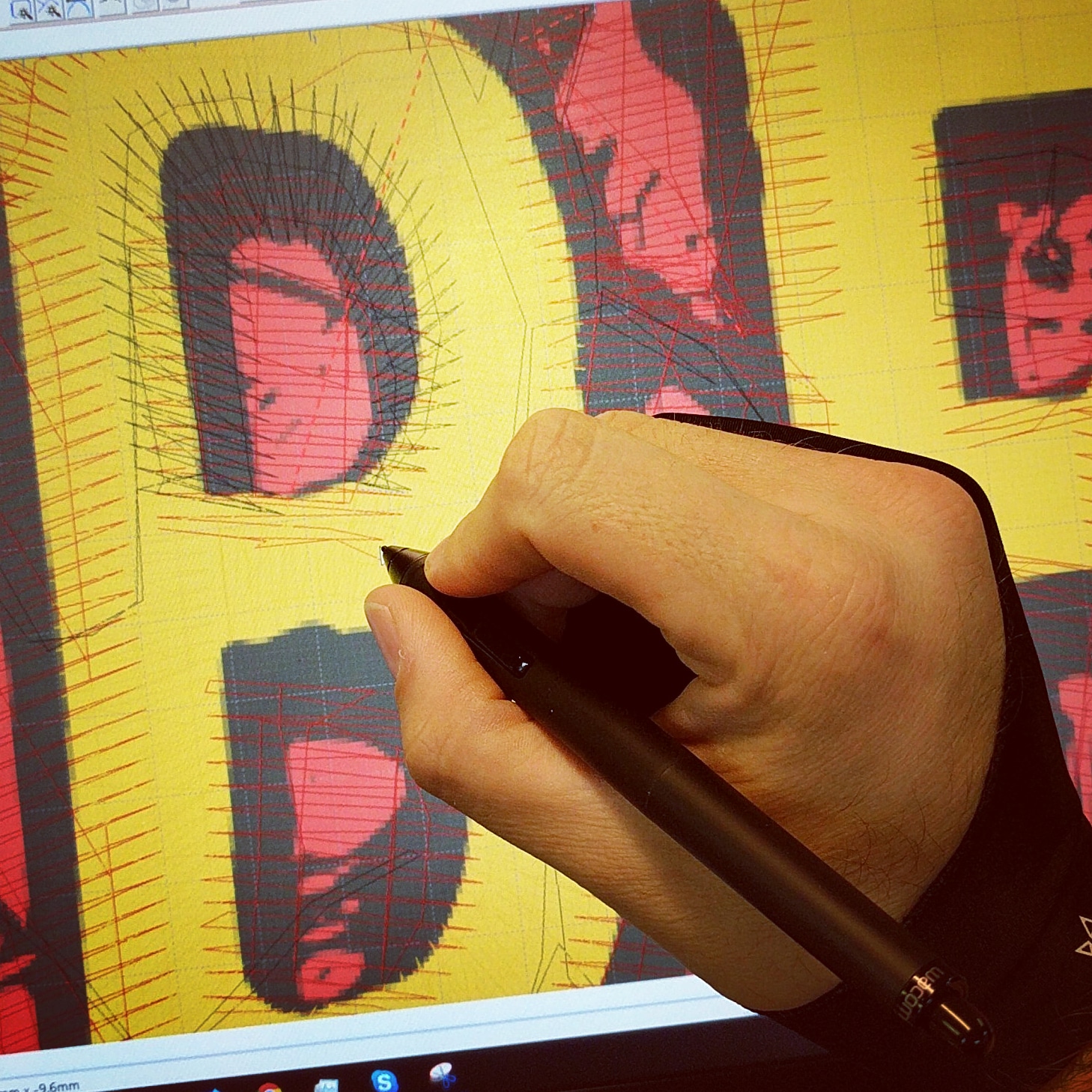Finest Digitizing for Embroidery: Boost Your Projects
Finest Digitizing for Embroidery: Boost Your Projects
Blog Article
Streamlining the Art of Needlework Digitizing: Step-by-Step Guide
As innovation continues to development, the digitization procedure has come to be a lot more available, permitting fanatics to bring their elaborate designs to life with ease. In this guide, we will decipher the intricacies of embroidery digitizing, breaking down each step carefully to streamline the process and empower both beginners and seasoned embroiderers alike.
Recognizing Needlework Digitizing Software Program
Needlework digitizing software program works as a crucial device for transforming intricate layouts right into electronic layouts compatible with embroidery machines, helping with specific stitching and customization. This specialized software application allows individuals to import various photo documents layouts, such as JPG or PNG, and transform them right into embroidery machine-readable layouts like DST, EXP, or PES - Digitizing for Embroidery. By making use of features like stitch modifying, rug choices, and string color selection, digitizing software makes it possible for users to control every element of the style procedure
Additionally, advanced needlework digitizing software uses devices for producing intricate layouts, adjusting stitch density, and including intricate details. Customers can also sneak peek the design prior to stitching it out, ensuring accuracy and reducing mistakes. Additionally, many software program programs provide automated features that assist streamline the digitizing procedure, conserving effort and time.
Understanding the capacities of embroidery digitizing software program is important for accomplishing premium lead to needlework tasks. By grasping this device, needlework enthusiasts and specialists can release their creative thinking and bring detailed designs to life with accuracy and performance.

Selecting the Right Style Documents
After acquainting on your own with the capabilities of needlework digitizing software program, the next vital step in the process is selecting the ideal layout declare your task. Digitizing for Embroidery. When selecting a layout declare needlework digitizing, it's important to consider the complexity of the layout, the size of the end product, and the sort of textile you will certainly be functioning with
For intricate designs with great details, a high-resolution image or vector data is suggested to guarantee that the embroidery maker can accurately replicate the layout. Furthermore, the size of the final product plays a significant duty in selecting the ideal design file. Bigger designs may require higher resolution files to preserve clarity and sharpness.
Additionally, the sort of material you will be embroidering on influences the option of layout documents. Different textiles may need changes in the layout documents to make sure that the stitches are correctly aligned and the layout looks like intended. By meticulously picking the ideal design data based upon these factors, you can set yourself up for an effective needlework digitizing process.
Digitizing Tools and Strategies
Making use of specialized software application and accuracy strategies, digitizing tools are vital in changing elaborate styles right into embroidery-ready data. Embroidery digitizing software application, such as Wilcom, Hatch, or Embrilliance, offers the essential platform to transform art work into stitch information. These programs offer features like stitch editing, rug alternatives, and lettering devices to go right here ensure the design equates perfectly onto textile.
One of the key strategies in digitizing is developing a clear path for the embroidery machine to comply with. This involves digitizing each aspect of the design with precision, establishing stitch types, densities, and directions. By utilizing devices like digitizing tablet computers or software-specific plugins, embroiderers can accomplish a high degree of precision in their digitized layouts.
Furthermore, grasping the art of underlay sewing is important for creating top quality needlework. Underlay sewing stabilizes the textile and creates a structure for the design, making certain that the last item is both visually appealing and lasting. By recognizing these digitizing devices and methods, embroiderers can elevate their craft and bring elaborate layouts to life with precision and efficiency.
Tailoring Stitch Types and Instructions
The selection of stitch types can significantly affect the general appearance and appearance of the stitched style. By tactically integrating these stitch kinds, embroiderers can accomplish deepness and measurement in their designs.
Moreover, the instructions of stitches plays a crucial function in enhancing the visual allure of the last embroidery. Varying stitch directions can add structure, emphasize certain components, and produce aesthetic rate of interest. As an example, altering the angle of stitches can mimic motion or natural patterns like fur or plumes. By explore various stitch angles and patterns, embroiderers can bring their designs to content life with remarkable detail and complexity. Understanding the art of customizing stitch kinds and instructions encourages embroiderers to release their creative thinking and raise the high quality of their work.
Testing and Refining Your Digitized Design
To make sure the accuracy and top quality of your digitized layout, extensive screening and improvement are essential steps in the needlework digitizing process. As soon as you have completed the digitization of your layout, it is critical to check it before proceeding with the real embroidery. Examining permits you to identify any kind of potential problems such as string breaks, sew density troubles, or design distortions that might impact the result.

After screening, it is necessary to refine your digitized style based on the feedback from the examination sew-out. This might involve tweaking stitch setups, changing thickness, or making modifications to the total design to accomplish the desired end result. By iterating through testing and refinement, you can adjust your digitized design to excellence before progressing with helpful hints the real embroidery procedure.
Final Thought
To conclude, understanding the art of needlework digitizing calls for a comprehensive understanding of the software program, selecting the ideal design data, using digitizing tools and techniques, customizing stitch kinds and directions, and screening and fine-tuning the digitized layout. By complying with these actions, embroiderers can simplify the digitizing procedure and develop top notch stitched styles with accuracy and effectiveness.
Report this page